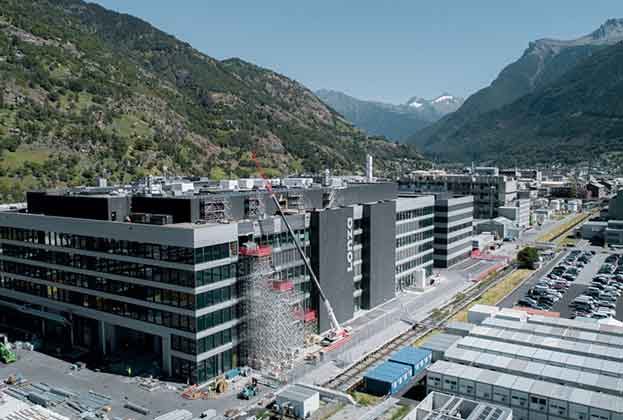Capital investment remains strong and real estate investor interest is strengthening
Global & UK trends
The scientific world never stands still. Whether it is called to action to provide a solution to a global pandemic or developing the next mind-boggling innovation. Just looking to current trends for 2022, the sub-sectors of genomics, mRNA, genetic therapies, quantum simulation and CRISPR appear to be evolving in capability and importance. However, within the real estate industry, it is arguably more important to understand the future trends by tracking individual companies and city-level analysis.
The level of capital being raised by life science companies, across the world, continued apace during 2021. The total amount of capital raised totalled US$803 billion last year, which includes all types of deals (M&A, IPOs, venture capital (VC) and other types of private equity). This was 43% higher than the total for 2020. However, it is expected that the total for this year will be lower. Despite this fact, there will still be a considerable growth of those life science companies that raised capital during the past few years, which will result in real estate decision-making and ultimately higher demand. The US still dominates the funding data accounting for a 67% share of the total capital raised by companies, last year.
For identifying opportunity in the real estate markets, there are many measures available to help to understand the strength of key locations across the globe. Tracking the flows of capital invested into life science companies is the best starting point for this. However, to understand the growing ecosystems, it is important to understand the characteristics and strengths of the 'Big 5' science nations in terms of academic excellence. These top five locations include the US, China, Germany, UK and Japan. These countries will have access to the biggest budgets, the best facilities and a long history of scientific excellence. However, what has emerged more strongly during the pandemic, is the interaction between the scientific community. These five countries are the linchpins of global life science research, but they are supported by international collaborations. Driven by strengthening academic reputations across the globe, recognising those countries, and specifically, the institutions, who are collaborating with the 'Big 5' provides a valuable insight for the next tier markets. For future real estate opportunities, for investors and developers, identifying those leading collaborating countries outside of the 'Big 5' is critical. Such countries include South Korea, Canada, France, Netherlands and Italy – all strong global economies, but also growing significantly in terms of research and development (R&D) excellence in the life sciences.
A trend that Savills has seen during the past 12 months is the stronger real estate investor appetite at the production stage of the scientific supply chain for human health. The R&D phases have driven real estate demand levels, particularly in the laboratory sector, but there is a realisation that the production and manufacture stage is as important and that the real estate required provides an opportunity for investors/developers. Good Manufacturing Practice (GMP) has come to the fore in the real estate sector, and we will watch with interest on how this emerges during the next few years. Hi-tech industrial buildings through to more advanced manufacturing facilities are part of this R&D/testing/manufacture supply chain.
As seen in the office markets, the growth of hybrid working in the laboratory has also flourished. The laboratory-based employees, for most companies, have adopted booking systems for reserving lab space, but enhanced hardware to take data home has also become more prevalent. In fact, less time in the lab has forced some researchers to spend more time diving into genomics and other datasets resulting in unexpected discoveries. Also, given the collaborative nature of the life science industry, in-person meetings and working, at agreed days/times of the week across teams, has become more planned, but overall, the hybrid patterns of work will continue to prevail. However, there are similar challenges to the office sector, with on-boarding of younger researchers being more difficult, but the hybrid model also alleviates some of the pre-Covid-19 issues that early-career researchers faced, such as childcare support.
Overall, the UK firmly sits within the classification of a 'superpower' when it comes to global life sciences. Throughout the UK, locations of funding for 2021 is shown on the map above. The mapped analysis primarily shows VC, but also shows deals where VC and a subsequent deal, e.g. M&A, has occurred in 2021. These are represented by the larger dots on the map. The South East and Eastern regions dominate the fundraising patterns, but as shown on 'Levelling up in the UK', this is also where there is a denser cluster of educational and research institutes – this is why a 'levelling-up' and leveraging from those academic and research institutes throughout the UK is essential to make it an even larger life science superpower.
Read the articles within Spotlight: Life Sciences – Trends & Outlook below.








